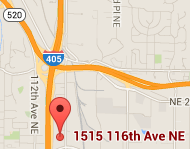This is a great question and one we often hear. The first point to understand is that TMJ is not a diagnosis at all. TMJ is an acronym for the TemporoMandibular Joints or simply your jaw joints. All normal healthy people have a pair, one on each side of your head. However, you may have pain or dysfunction (example, limited opening) of your TM joints and therefore your dentist has suggested a diagnosis of “TMJ”. Historically health care professionals, and therefore the general public, have used “TMJ” to refer to a broad range of disorders affecting not only the TM joints, but also associated structures of the head and neck. In order for you to better understand what your health providers are telling you (or not telling you) it may be helpful to take a stroll down nomenclature lane. Currently, painful disorders of dental structures, jaws, head and neck areas are collectively referred to as craniofacial pain disorders. Within this broad category lie the various temporomandibular disorders which refer specifically to problems within the jaw joints themselves.
In his text “Oralfacial Pain, Classification, Diagnosis, Management”, Dr. W. E. Bell described the field of craniofacial pain as follows:
The diagnoses and management of complex acute and chronic craniofacial pain disorders including neuropathic craniofacial pain disorders, muscular craniofacial pain disorders, chronic regional pain syndrome, complex masticatory and interrelated cervical neuromuscular pain disorders, headache disorders, temporomandibular disorders, craniofacial dyskenesias and dystonias, craniofacial sleep disorders and other disorders causing persistent pain and dysfunction of the craniofacial structures.
So, the proper generalized terms for these types of conditions are Craniofacial Pain (CFP) and Temporomandibular Disorder (TMD) and the potential combinations of conditions which may affect a given patient are seemingly endless.
We are now back where this discussion began, “I have TMJ. What does that mean?” Considering there are over 200 different diagnoses under the craniofacial pain umbrella, and different treatments apply to each diagnostic entity, it should be clear that the correct diagnosis initially is the key to successful treatment. The lesson summary is, if a healthcare provider tells you or a family member that you have “TMJ”, ask for more specific information. If their response is inadequate or uncertain, ask for a referral to a Dentist who is specially trained and experienced in the area of craniofacial pain and temporomandibular disorders.
Remember TMJ is NOT a diagnosis.

